At the NRF Supply Chain 360 conference and expo, attendees explored the modes and methods needed to build a stronger, more sustainable supply chain and ensure resiliency in challenging times. Learn more about the conference, held June 20-21, 2022, in Cleveland, here.
The sustainability goal posts are shifting for retailers. It is no longer just about the sustainability of retail operations. It is increasingly about the sustainability of retail supply chains from beginning to end.
When U.S. retailers started embedding sustainability into their business strategies 15 years ago, they appropriately prioritized areas where they have immediate and direct control. Retailers began reducing energy use and waste at stores and distribution centers, installing solar panels, buying renewable energy, improving the fuel efficiency of their vehicles and further optimizing the distribution and delivery routes they run.
Traditional sustainability strategies also focus on increasing the diversity of executive and management teams and supporting local organizations and initiatives in the communities they serve. All these priorities remain foundational for any retail sustainability strategy.
Consumer expectations and demands for what it means to be a sustainable retailer, however, are expanding beyond what retailers directly control. It is no longer enough for retailers to focus only on their own operations. They now must explore sustainability efforts of suppliers throughout the supply chain, as well as logistics companies that move goods from manufacturers to retail store shelves and consumers.
Sustainability is an increasingly important consideration for consumers of all ages; more than 50 percent report a willingness to pay more for sustainable products. Consumers, especially Generation Z, want to buy sustainable products made from sustainable materials manufactured with sustainable processes in sustainable factories.
A recent IBM consumer study conducted in collaboration with NRF concluded that “tracing products across the supply chain and offering meaningful information about their environmental impact is now a business necessity.”
Similarly, investors are asking what retailers are doing to understand and address climate change risks and opportunities. More than 90 percent of a retailer’s carbon emissions — the emissions causing climate change — occur deep within supply chains. These “scope 3 emissions” are challenging for retailers because they are outside their direct control. Despite that, some retailers are committing to reduce their scope 3 emissions as part of science-based target commitments.
Driven by consumer and investor interest, retailers are exploring the hidden human health, environmental and social impacts deep within their supply chains. Understanding supply chains means asking questions and gathering data through every phase of the supply chain from the acquisition of raw materials that go into making a product to what consumers do with the products when they no longer want them.
The questions include:
Raw materials
What’s the origin of the raw materials? Where were they mined, gathered or grown? Are they derived from old products that have been recycled? If they were grown, were they grown using organic processes? What are the working and environmental conditions at the mines or on the farms? What are the carbon emissions of extracting, growing or consolidating the raw materials?
Manufacturing
How are the workers treated at every step of the manufacturing process? What human health or environmental risks occur at every step of the manufacturing process? Are the workers paid fairly? Are the factories powered by renewable energy (e.g., solar, wind, hydroelectric)? How efficient are the manufacturing processes? How much and what kind of wastes are generated during manufacturing? How are those wastes properly managed?
Keep up with the ever-evolving supply chain and how retailers are tackling disruptions.
Distribution
How fuel efficient are the trucks/trains/ships that move raw materials, unfinished and finished goods around the world? How much global warming pollution do they create? How much packaging is required to safely transport the products and how easy is it to recycle the packaging?
Use
What are the human health or environmental impacts of using the product as designed? Grocery retailers are asking if the food they sell is healthy. Fashion brands are asking how much energy it takes to wash the clothes they sell. Electronics retailers are asking how much electricity it takes to operate the televisions or computers they sell.
Post-consumer
When consumers no longer want the product, what happens to it? Are those products recycled? Composted? Resold? Disassembled? Donated? Incinerated? Sent to landfill?
As retailers explore these questions as part of their sustainability initiatives, they are discovering and mitigating risks and identifying new business opportunities. They are shifting product offerings and working with suppliers to make sustainable products more widely available and affordable to consumers.
Target is working with suppliers to create options that significantly reduce packaging or product waste. Amazon created a venture capital fund to accelerate climate change solutions. Walmart developed sustainable supply chain goals and tools to help its suppliers be more sustainable. Multiple retailers are exploring new circular economy business models that generate additional profits by selling and reselling the same products multiple times.
These innovative and profitable solutions are emerging as retailers expand their sustainability focus beyond their own operations and seek new sustainability opportunities within their supply chains. The future of retail sustainability will be more sustainable supply chains.


